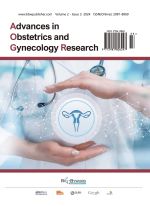Abstract
Polycystic ovarian syndrome (PCOS) is an endocrine disorder (an imbalance of sex hormones) in which water-filled sacs called cysts form in ovaries. Hormone imbalances in PCOS can lead to problems like irregular periods, troubled ovulation, diabetes, and cardiovascular disorders. PCOS is the main reason for ovulation issues and infertility among females. This study aims to check how many female healthcare providers in the medical institutes of Bahawalpur know about PCOS. In Pakistan, around 52% of reproductive-age women deal with PCOS versus 20–25% in the UK. The study surveyed 341 participants to assess their knowledge. Findings showed that nearly all participants had good knowledge about PCOS (94.4%), and over one-fifth showed possible symptoms (23%). Many of them were undergraduates. The research highlights the need for better education and awareness of PCOS for the general population through these healthcare providers and care to enhance affected women’s quality of life. Based on signs and symptoms, 78 respondents (22.9%) are suspected to have PCOS but are living unknowingly with a low quality of life. They should take medical action as early diagnosis of PCOS is beneficial for improving their quality of life. Hence, community-based awareness programs are needed to address the risk factors, problems, and clinical manifestations for healthcare providers and the general population.
References
Roop JK, 2018, Hormone Imbalance: A Cause for Concern in Women. Research Journal of Life Sciences, Bioinformatics, Pharmaceuticals and Chemical, 4(2): 237–251.
Brian AK, Robin LC, Michael EE, et al., 2013, Applied Therapeutics: The Clinical Use of Drugs, 10th edition, Wolters Kluwer, Netherlands, 1150–1151.
Azhar A, Abid F, Rehman R, 2020, Polycystic Ovary Syndrome, Subfertility and Vitamin D Deficiency. Journal of College of Physicians and Surgeons Pakistan, 30(5): 545–546.
Khan MJ, A Ullah, S Basit, 2019, Genetic Basis of Polycystic Ovary Syndrome (PCOS): Current Perspectives. The Application of Clinical Genetics, 2019(12): 249–260.
Shermin S, A Noor, S Jahan, 2019, Polycystic Ovary Syndrome: A Brief Review with Recent Updates. Delta Medical College Journal, 7(2): 84–99.
Sidra S, Tariq MH, Farrukh MJ, et al., 2019, Evaluation of Clinical Manifestations, Health Risks, and Quality of Life Among Women with Polycystic Ovary Syndrome. PLoS One, 14(10): e0223329.
Abraham Gnanadass S, Divakar Prabhu Y, Valsala Gopalakrishnan A, 2021, Association of Metabolic and Inflammatory Markers with Polycystic Ovarian Syndrome (PCOS): An Update. Archives of Gynecology and Obstetrics, 303(3): 631–643.
Barber TM, Hanson P, O’ Weickert M, et al., 2019, Obesity and Polycystic Ovary Syndrome: Implications for Pathogenesis and Novel Management Strategies. Clinical Medicine Insights: Reproductive Health, 2019(13): 1179558119874042.
Joham AE, Norman RJ, Stener-Victorin E, et al., 2022, Polycystic Ovary Syndrome. The Lancet Diabetes & Endocrinology, 10(9): 668–680.
Krentz AJ, von Mühlen D, Barrett-Connor E, 2007, Searching for Polycystic Ovary Syndrome in Postmenopausal Women: Evidence of a Dose-Effect Association with Prevalent Cardiovascular Disease. Menopause, 14(2): 284–292.
Nidhi R, Padmalatha V, Nagarathna R, et al., 2011, Prevalence of Polycystic Ovarian Syndrome in Indian Adolescents. Journal of Pediatric and Adolescent Gynecology, 24(4): 223–227.
Azziz R, 2018, Polycystic Ovary Syndrome. Obstetrics & Gynecology, 132(2): 321–336.
Harada M, 2022, Pathophysiology of Polycystic Ovary Syndrome Revisited: Current Understanding and Perspectives Regarding Future Research. Reproductive Medicine and Biology, 21(1): e12487.
Trivax B, Azziz R, 2007, Diagnosis of Polycystic Ovary Syndrome. Clinical Obstetrics and Gynecology, 50(1): 168–177.
Moghetti P, 2016, Insulin Resistance and Polycystic Ovary Syndrome. Current Pharmaceutical Design, 22(36): 5526–5534.
Ajossa S, Guerriero S, Paoletti AM, et al., 2004, The Treatment of Polycystic Ovary Syndrome. Minerva Obstetrics and Gynecology, 56(1): 15–26.
Alhomoud FK, Basil M, Bondarev A, 2016, Knowledge, Attitudes and Practices (KAP) Relating to Dietary Supplements among Health Sciences and Non-Health Sciences Students in One of the Universities of United Arab Emirates (UAE). Journal of Clinical and Diagnostic Research, 10(9): JC05.
Haq N, Riaz S, Nasim A, et al., 2017, Prevalence and Knowledge of Polycystic Ovary Syndrome (PCOS) Among Female Science Students of Different Public Universities of Quetta, Pakistan. Imperial Journal of Interdisciplinary Research (IJIR), 3(6): 385–392.
Olotu JE, Okon M, 2020, Awareness of Polycystic Ovarian Syndrome Among Young Female Adults in Nigeria. EC Endocrinology and Metabolic Research, 5(8): 21–26.
Tahir H, Hassan A, Khan QU, et al., 2020, Prevalence of Polycystic Ovary Syndrome Awareness Among Female Medical Students. Discoveries Reports, 2020(3): e10.
Rao M, Broughton KS, LeMieux MJ, 2020, Cross-Sectional Study on the Knowledge and Prevalence of PCOS at a Multiethnic University. Progress in Preventive Medicine, 2020(5): e0028.
Taghavi SA, Bazarganipour F, Hugh-Jones S, et al., 2015, Health-Related Quality of Life in Iranian Women with Polycystic Ovary Syndrome: A Qualitative Study. BMC Women’s Health, 2015(15): 111.
Yoo RY, Adams J, Chang RJ, 2003, Questionnaire on Self Perception and Behavior of Adolescent Girls with Polycystic Ovarian Syndrome (PCOS). Fertility and Sterility, 80(3): S3.
Palioura E, Diamanti-Kandarakis E, 2013, Industrial Endocrine Disruptors and Polycystic Ovary Syndrome. Journal of Endocrinological Investigation, 36(11): 1105–1111.
